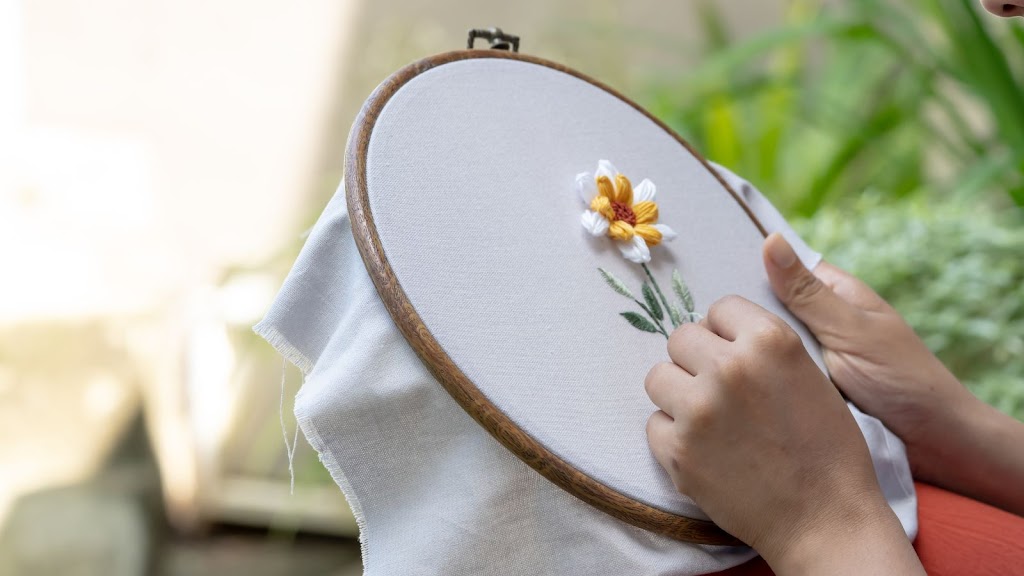In the vast panorama of art and craftsmanship, the Elizabethan period stands tall as a gilded age of embroidery, a practice that transcended mere textile decoration. During this era, embroidery reached an unparalleled level of sophistication and creativity, evolving into a distinct art form. The wealth of details and meticulous attention to intricacies defined the masterpieces of this time, spanning from adorning household linens to tapestries, curtains, and cushions. Yet, it was in clothing that its artistic zenith was truly revealed, as attested by the portraits of the age. Attires were often completely enveloped in elaborate embroideries, adorned with pearls and precious stones, giving life to textile artworks that defied imagination. By the end of the century, fabrics were so richly adorned that the underlying cloth itself was scarcely visible.
The Abundance of Details: Dream Attires and Living Gardens
The art of embroidery found extraordinary expression even outdoors, with the renowned knot gardens, where plants and low hedges formed a kind of living embroidery. The geometric motifs of embroidery merged with images of leaves, fruits, and flowers, many of which held symbolic meanings or referenced family crests. Decorations of gold and silver threads were carefully applied and sewn around the edges of the images, while chain stitch was often employed to give life to the sinuous lines of intertwining vines that bound the flowers together.
Feminine Artistry: Creativity and Skill
In an era when the art of embroidery was considered a form of silent and noble expression, young women from the middle class were expected to be skilled embroiderers. Proficiency in embroidery was deemed an essential trait for women, often associated with femininity and refinement. Many invented their own designs, giving birth to unique works of art. Others, aiming to replicate a particular pattern worn by a court lady, could purchase a copy of the design from a professional. This allowed them to create their own version of embroidery, infusing a personal touch into the piece. Elizabethan women showcased not only manual dexterity but also a creativity that challenged the conventions of their time.
The Decline of Religious Embroidery and the Rise of Ornamentation
During the Tudor era, English artisans were renowned throughout Europe for their elaborately embroidered ecclesiastical vestments. However, after King Henry VIII established the Church of England in 1534, the demand for intricately decorated religious garments significantly dwindled. Embroidery became the preferred choice for adorning domestic furnishings, fashionable clothing, and ceremonial attire used at the Elizabethan and early Stuart courts. Remarkably, a considerable number of fragile embroidered objects from this period have survived in public and private collections, reflecting a range of contemporary concerns and opinions on nature, faith, family relations, and monarchy.
The Artistic Fabric: Materials and Techniques
The embroidery masterpieces of this era were primarily crafted on two types of base fabric: ivory satin silk and natural plain linen known as canvas. The embroidery works of this period stand out for their remarkable expressiveness, a result of the inventive use of luxury materials. These embroideries demonstrate a high level of skill in combining metallic elements with silk threads.
The Varied Art of Embroidery: Extraordinary Creations
During the Tudor era, an extensive array of objects was embroidered, including nightcaps, gloves, shoes, and, of course, garments. Renaissance women of affluence dedicated much time to embellishing clothing, accessories like purses, and household items. The most common embroidery techniques were the tent stitch, cross-stitch, and Gobelin stitch, all worked on canvas. The tent stitch, a small diagonal stitch that completely covers the canvas, creates a smooth surface. The cross-stitch, a simple X-shaped stitch, was used for small decorative motifs. The Gobelin stitch is a variation of the tent stitch, worked diagonally through two or more threads of canvas, producing a more textured effect.

